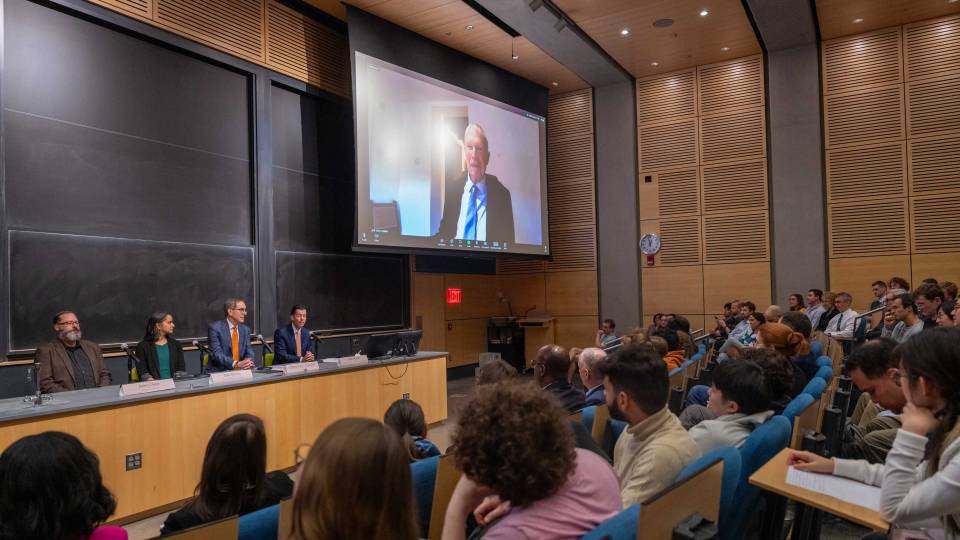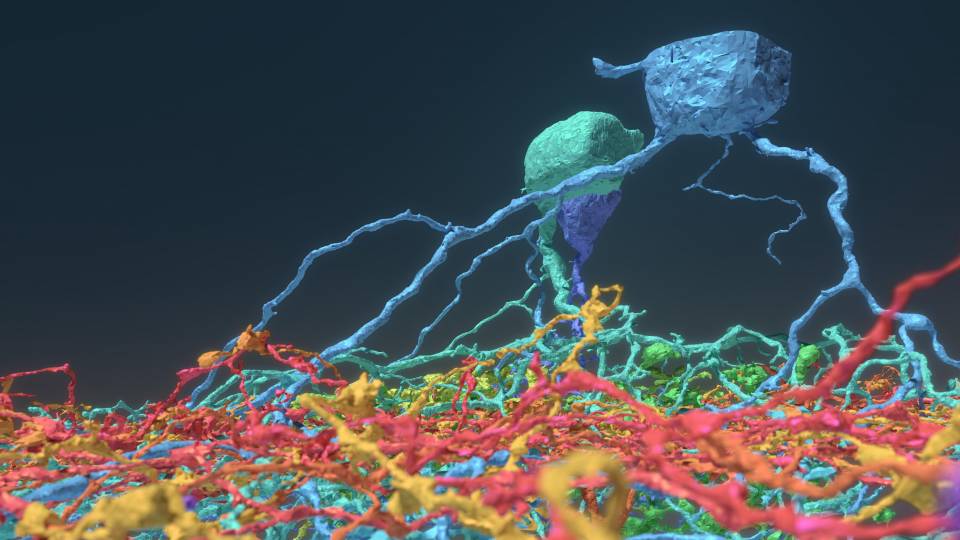Five Princeton undergraduates are taking a good look inside the brain with some of neuroscience’s latest tools and techniques during a nine-week internship program the University initiated this summer. The goal is to attract the next generation of researchers to one of science’s fastest-growing and most challenging fields.
“We still have so many unanswered questions about the brain,” said Carlos Brody, an associate professor of molecular biology and one of the coordinators of the undergraduate component of the Quantitative and Computational Neuroscience Program(Link is external). “It’s by far the most complex organ in the body, with billions of cells talking to each other, producing a huge stream of data. Analyzing the stream takes a scientist who has the mathematical and analytical skills to comprehend it.”
The interns each have taken on an individual project to help them develop these skills and acquire new ones. Designed with the assistance of the faculty, the projects are intense, encapsulated investigations into an aspect of the brain’s workings.

Rising senior Megan Lee is trying to perceive patterns in the signals passing through the dendrites that connect cells in the brain. Though the meaning is not yet clear, it is likely that the dendrites conduct a torrent of information among the cells.
“You can make a recording of these dendrites firing, but if you just watched it you’d never make sense of it,” said Lee, an independent concentrator in computational biology. “You need an efficient way to analyze it all.”
Lee, who has studied neuroscience since her freshman year, was initially fascinated by both math and biology. She soon saw the potential of computation to help solve difficult problems like recognizing patterns in the dendrites.
“I realized computation might solve biological problems that biology can’t solve by itself,” she said. “Most of my day is spent in front of the computer, but in the end, at the root of this project is a very biological problem. The computational techniques are just the route by which we’ll solve it.”
Lee’s project will likely become part of her senior thesis work, but because the internships can be tailored to the individual, they also are ideal for introducing talented students to the field. Andrew Saxe, an electrical engineering major who is fascinated with machine learning, said he wanted to learn about neuroscience to expand the perspective he has gained from developing a robot car for the Princeton Autonomous Vehicle Engineering(Link is external) program.
“I’ve learned a bit about intelligent machines from the engineering side, so I wanted to see it from the science side as well,” said Saxe, also a rising senior. “A lot of recent advances in the field have been made by studying the brain.”
Like Lee, Saxe is also spending his time analyzing data with the aid of a computer. In his case, human subjects play a simple video game in which they see a group of dots, most of which are moving either to the right or left. The faster the player identifies the direction the majority of the dots are moving, the more “cash” the player receives. But few players realize that they actually do better if they choose quickly while making lots of mistakes.
“Only about a third of the players realize that you can win more money that way than you can by being slow and accurate,” Saxe said. “It turns out that figuring out why some people make better decisions than others in situations like this involves a lot of variables, and we need a computer to be able to examine all those variables simultaneously. It’s too much to keep in your head all at once.”
Saxe said that neuroscience is already proving a fascinating subject, allowing him to develop both new theories and the experiments to test them.
“I personally like the theoretical side the most, but you can’t have one without the other, and in neuroscience you can do both,” he said. “When you have both, it’s really interesting.”

The other students and their projects are: Tatiana Lau, a rising junior majoring in economics who is investigating why winning buyers often overbid at auctions; Jacqui Rabkin, a rising junior majoring in psychology who is exploring how to apply computational models of learning to the problem of eating disorders and addiction; and Ben Wasserman, a rising senior majoring in molecular biology who is studying the ability of a salamander retina to detect irregularities in the pattern of a flashing light.
The internship program is funded by a five-year, renewable $150,000 grant from the National Institutes of Health, which Jonathan Cohen said has expanded Princeton’s ability to educate young talent.
“We are now able to expose undergraduates to the field, whereas we had been able to train only graduate students and postdoctoral students before,” said Cohen, the Eugene Higgins Professor of Psychology. Cohen and David Tank, the Henry L. Hillman Professor in Molecular Biology, are co-directors of the Princeton Neuroscience Institute as well as the Quantitative and Computational Neuroscience Program.
Both Cohen and Brody said one of their main goals is to nurture the program in coming years to increase both funding and student numbers, possibly finding ways to fund undergraduate projects during the academic year as well. Because the grant also provides funding for ongoing graduate student research, Brody said it will likely encourage more students to make neuroscience their career.
“We would like to see more undergraduates go to graduate school, and more grad students become faculty members,” he said. “Neuroscience is expanding rapidly, and this program will put Princeton students in the best position to make groundbreaking discoveries.”




